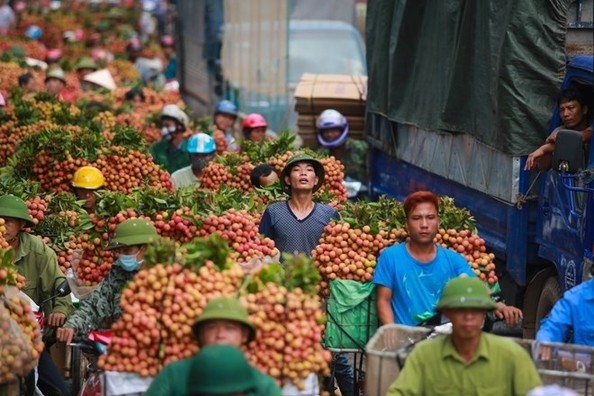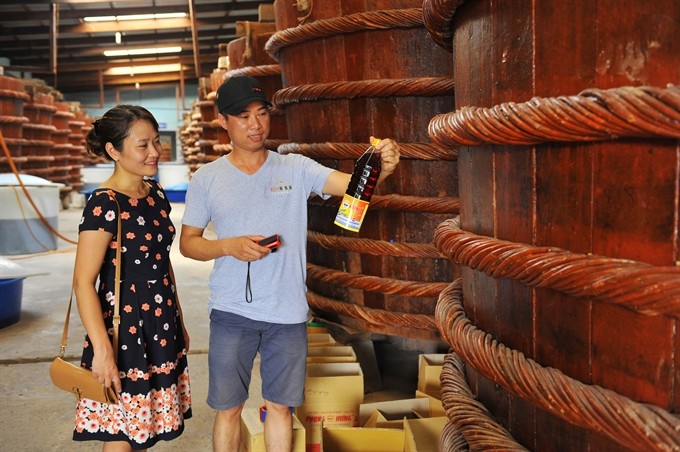(VOVworld) - Geographical indication or GI is a sign used on products that have specific geographical origin and possesses qualities due to that origin. It is a valuable commercial asset that has contributed significantly to national economic growth. But many businesses remain unaware of their importance. Many Vietnamese brands have been stolen or counterfeited, negatively impacting the reputation and growth of businesses. A Vietnamese export product with a clear geographical indication enjoys easier access to demanding international markets like the US, Japan, and the EU.
Vietnam currently has 43 products with a registered geographical indication, from flowers, and food to consumer goods. They come from across Vietnam - Ha Giang province in the northern mountains, Quang Ninh province in the northeast, Thanh Hoa province on the north central coast, Vinh Long and Bac Lieu province in the Mekong Delta. But lax management of geographical indication has resulted in widespread counterfeiting.
 |
| The EU’s recognition and protection of GIs gives Vietnamese farm produce an opportunity to penetrate the demanding EU market. (Photo: PV/Vietnam+) |
Take Phu Quoc fish sauce, for example. Pham Ngoc Thanh, Director of the Phuc Lam Consulting and Trade Development Company, says inaccurate use of the word "Phu Quoc" by a number of domestic and foreign companies for their fish sauce products is a violation of intellectual property rights.
“Many products are illegally using the Phu Quoc trademark. The companies who sell them are not legally allowed to put the label ‘Phu Quoc fish sauce’ on their products. Consumers don’t know which Phu Quoc fish sauce has been certificated with a GI and which ones haven’t,” Thanh added.
 |
Registration of geographical indications will help Phu Quoc fish sauce firms protect trademarks, improve their position in the world market and easily enter demanding markets.
(Photo: Quang Hai/ VNA) |
The National Office of Intellectual Property of the Ministry of Science and Technology has reported that when Vietnam negotiated a free trade agreement with the EU, it proposed a list of 41-GI-protected, nationally produced products of which the EU agreed to protect 39.
The protected items include vegetables and fruits, industrial and processed goods, seafood and seafood products, and other goods.
The EU’s recognition and protection of GIs gives Vietnamese farm produce an opportunity to penetrate the demanding EU market.
One obstacle to GI protection is that domestic producers are working independently. Not fully understanding the importance of GI protection, they have not attempted to co-operate with each other. Instead, they often compete unfairly, undercutting the trademarks of regional specialties.
Nguyen Quoc Thinh, a lecturer at Vietnam’s Commerce University, said: “One important reason is Vietnam’s weak market management. Agri-producers and producers of specialties haven’t linked with each other to control items without GI certification. The lack of coordination among producers is causing many Vietnamese agricultural products to lose their standing in the market.”
When the Vietnam-EU FTA takes effect in 2018, Vietnam will try to exploit famous products like Phu Quoc fish sauce, dragon fruit, coffee, and tea that benefit from GI protection.
To that end, Vietnam should build a national system for quality control and GI protection. This would help Vietnamese products overcome technical barriers to penetrating the EU market.
Tran Van Tung, Deputy Minister of Science and Technology, said: “We need to establish monitoring teams to ensure product quality during the production process and not let the quality get diluted. We need to pay attention to packaging specifications and reduce the circulation of counterfeits and imitation goods in our domestic market.”